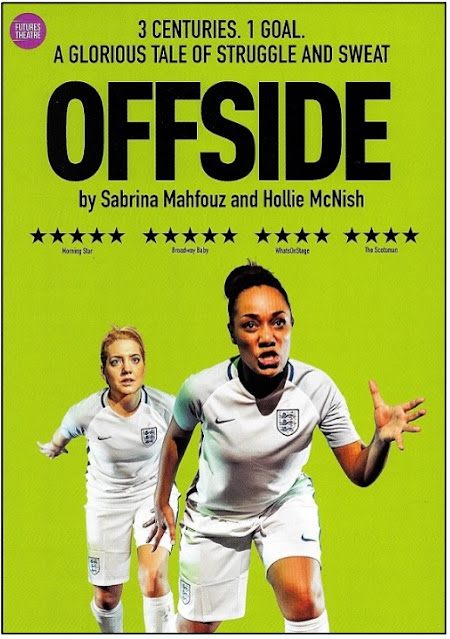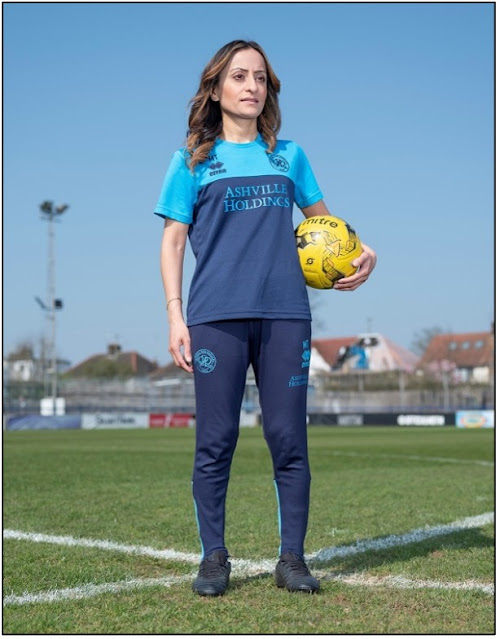The fourth and final part of the guest blog by local historian Philip Grant on a key piece of local history. Many thanks to Philip Grant for his tireless efforts to ensure our local history is acknowledged and celebrated.
1. The original (west end) entrance to Wembley Arena in 2003. (Image from the internet)
Welcome back for the final part of this story. As we saw at the end of Part 3, the Empire Pool had been renamed Wembley Arena, and although it was still home to some sporting events, it was now being used mainly to stage music and entertainment shows.
If I tried to name all of the acts who have performed at the Arena, the list would take up the rest of this article. I will just mention a few, and if I miss one of your favourites, you are welcome to add your memories of the time(s) you saw them at Wembley in the comments below. Among the top British bands that have performed here are The Rolling Stones, The Who, Status Quo, Queen, The Police and Dire Straits. The first two of those both had drummers from Wembley, in Charlie Watts and Keith Moon!
It would be unfair if I didn’t also name a few of the top acts from overseas that have also performed here since the name was changed in 1978. Did you see ABBA, AC/DC, Diana Ross, John Denver, Madonna, Meat Loaf, Dolly Parton, Tina Turner, Whitney Houston or Stevie Wonder at Wembley Arena? If so, please feel free to add your memories below.
2. A Torvill & Dean programme from 1985, and a recent Holiday on Ice show. (Images from the internet)
One of the original purposes of the Empire Pool was to provide an ice-skating
rink. Although Wembley stopped staging its own ice pantomimes, spectacular touring
productions from the “Holiday on Ice” franchise have been a regular feature at
Wembley Arena since 1978. If you saw it on TV, as I did, you will never forget
Jayne Torvill and Christopher Dean’s gold medal-winning “Bolero” ice dance at
the 1984 Winter Olympics. The following year, as part of their World Tour, they
sold out the Arena for seven weeks with their own ice show.
The building was now more than fifty years old, and in the late 1980s
Wembley Stadium Ltd invested £10m to upgrade the Arena’s facilities for both
performers and the paying public who came to see them. The improvements allowed
even more spectacular effects to be included, as the 1990s saw more than 900
concerts performed at the venue. One of the most unusual for Wembley was an
arena staging of Puccini’s opera “Turandot” by the Royal Opera in 1991
(building on the popularity of the aria “Nessun Dorma”, which the BBC had used
as the theme tune for its coverage of the football World Cup in Italy the
previous year!).
3. Concert of Hope, George Michael singing in 1993, and watching other
performers with Princess Diana.
(Images from the internet)
Charity events had been a feature of the Arena’s programme for decades. The annual Concert of Hope for World Aids Day was supported by Diana, Princess of Wales, and top performers, including another famous musician who grew up in Brent, George Michael.
Cliff Richard, who first performed here in 1960 as part of a NME Poll Winners’ concert, had 49 shows at Wembley Arena in the 1990s, and was still packing the venue with his 50th anniversary tour in 2007. A different genre of pop music also came to the Arena in the nineties, with shows from boy (and girl) bands, including Take That, Boyzone, The Spice Girls and Westlife. Two of those groups were from Ireland, but another Irish import, Michael Flatley’s “Lord of the Dance”, was so successful in 1997 that it returned for 21 sell-out shows the following year.
4. “Lord of the Dance” programme and video screenshot. (Images from the internet)
February 1999 saw the first solo stand-up comedy act at the Arena (many more would follow) when Eddie Izzard performed “Dress to Kill”, in aid of The Prince’s Trust. Britain (and Brent’s) increasing cultural diversity also saw Wembley Arena hosting more Asian / Bollywood music shows, by performers including Amitabh Bachchan and Asha Bhosle.
5. Eddie Izzard programme and Asha Bhosle poster. (Images from the internet)
By the end of the twentieth century, the original Wembley Stadium was about to be demolished and replaced. It had been bought, together with around 100 acres of land that Arthur Elvin’s company had acquired, by the Football Association’s Wembley National Stadium Ltd, but they were not interested in redevelopment. In 2002, they sold some of the land, including the Arena, to Quintain Estates and Developments Plc, which eventually bought 85 acres of Wembley Park.
Wembley Arena was only eleven years younger than the 1923 stadium, and Quintain were soon making redevelopment plans, including a major refurbishment of the Grade II Listed arena. Work began in February 2005, and included moving the main entrance to the opposite end of the building, with access from a new Arena Square (it is actually a triangle!). The project cost £36m, and the “new” 12,500-seat Wembley Arena re-opened on 2 April 2006, with a concert by Depeche Mode.
6. The Wembley Arena redevelopment in progress, 2005. (Image from the internet)
You can see the Arena being refurbished in the photograph above, but beyond it you can also see an exhibition centre, a triangular office block and a round building, Wembley Conference Centre, which were built by the Wembley Stadium company in the 1970s. The Conference Centre had been the venue for the annual Masters Snooker Championship since 1979, but after Quintain demolished that building in 2006, to make way for its Quadrant Court flats development, “The Masters” moved to Wembley Arena from 2007 to 2011.
7. Scenes from the Olympic badminton and rhythmic gymnastics events at
Wembley Arena in 2012.
(Images from the internet)
We saw in Part 2 how the then Empire Pool was used for some sports in the 1948 Olympics, and when the Games came to London again in 2012, the now Wembley Arena played host to two different Olympic competitions. First it was the badminton events, followed by the rhythmic gymnastics. Together they brought hundreds of competitors, from more than fifty nations, and thousands of spectators to Wembley.
8. Wembley Arena, with Hilton Hotel and LDO beyond, in 2013.
Redevelopment continued around the refurbished Arena and its square. Forum House was the first of Quintain’s many blocks of apartment homes, built between the western end of the Arena and Empire Way. The Hilton Hotel was another early addition, just across Lakeside Way (remember that the Empire Pool was built at one end of the British Empire Exhibition’s central lake!) from the Arena entrance. The former Wembley exhibition halls made way for the London Designer Outlet shopping centre, which opened in 2013, as did Brent’s new Civic Centre, on part of the site of the former BEE Palace of Industry, across Engineers Way from Arena Square.
9. Arena Square, with Brent Civic Centre beyond, summer 2014.
Arena Square, with its seasonal fountains, has become a popular open space (especially since the trees planted along its Wembley Park Boulevard side have grown large enough to provide some shade). Another of its features, designed to celebrate some of the Arena’s most popular performers, is the Square of Fame. Although this is on nothing like the scale of the Hollywood Boulevard “walk of fame”, it has become an attraction in its own right. Madonna was the first star to have bronze casts of her hands put on display, in 2006. The most recent addition is Dame Shirley Bassey, in 2019, sixty years after her appearance in the first popular music show at the Empire Pool (although she continued to perform here well into the 21st century).
10. A Square of Fame compilation, showing some of the stars who have made their mark at the Arena.
In 2013, Quintain handed over the management of Wembley Arena to a U.S. music promotions company (now known as ASM Global). They, in turn, entered into a 10-year naming rights deal with Scottish and Southern Energy, so that the building became known as The SSE Arena, Wembley. This made little difference to the shows put on at the venue, which included the annual live final of the X-Factor TV talent show (with previous episodes filmed at Wembley Park’s Fountain Studios, until they closed in December 2016).
11. Outside and inside The SSE Arena on X-Factor finals night. (Images from the internet)
The Arena’s name changed again, after SSE sold its retail business to another electricity supplier, OVO Energy, in 2020. What began in 1934 as the Empire Pool is now the OVO Arena Wembley. And twenty years after buying the Arena, Quintain sold it in 2022, raising capital to pay for the construction of more buy-to-let apartments as part of its continuing redevelopment of Wembley Park. Its owner is now ICG Real Estate, part of the private equity firm Intermediate Capital Group.
12. OVO Arena Wembley, from across Engineers Way, July 2024.
I hope you have enjoyed discovering more about the history of this famous Wembley Park landmark and venue. It is a story that I have wanted to share for several years, and the building’s 90th anniversary felt like a good time to do that.
As long ago as the 1990s, Brent Council and the Stadium company worked together to celebrate the sports and entertainment heritage of Wembley’s Stadium and Arena. They did this with a series of ceramic tile murals, which welcomed visitors coming from Wembley Park Station through a new subway and onto the newly pedestrianised Olympic Way. Unfortunately, in 2013, the Council agreed to allow Quintain to cover those tile murals with advertisements!
13. Some tile mural scenes celebrating events from Empire Pool / Wembley Arena history.
Along with Wembley History Society and a number of local residents, I have been campaigning since 2018 to get these tile murals put back on public display. In 2022, Quintain agreed to put the mural scenes on the walls in Olympic Way, which they own, back on public view. They include the ice hockey tiled picture at the top of the image above.
The other four mural scenes in that image are on the walls of the subway, which Brent Council own. I had taken a photograph of the mural celebrating the Horse of the Year Show in 2009, but the other three images, showing a female singer (Shirley Basey?), an ice skater and a basketball player (Harlem Globetrotters?), are all extracted from old views of the walls. All four of these murals are still hidden from view, behind LED advertising screens.
Brent Council had the chance to put the subway murals back on public view from the end of August 2024, and there was a strong case for doing so. Sadly, Brent’s Cabinet was unwilling to consider that case, choosing instead to receive slightly more advertising rent. That decision will mean these parts of the Arena’s history (and more scenes from Wembley Stadium’s history) will remain hidden from residents and visitors for at least another four years.
Philip Grant.
































